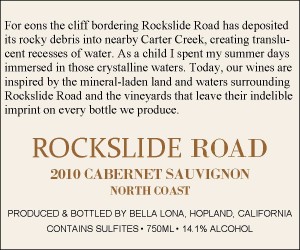Similes In Wine Journalism Are Like ‘Totally Awesome’.
Chapter Six, Part Two.
 Americans often have difficulty with the vocabulary of wine analysis, which is odd as we seem to have no problem talking about our “feelings”. We’ve become so sensitive that I often well up with tears just watching a Hallmark commercial and something really emotional can send me to bed for a week, say something like picking up the check.
Americans often have difficulty with the vocabulary of wine analysis, which is odd as we seem to have no problem talking about our “feelings”. We’ve become so sensitive that I often well up with tears just watching a Hallmark commercial and something really emotional can send me to bed for a week, say something like picking up the check.
When it comes to describing wine our vocabulary is often limited to “I like it” or “I don’t”. The French on the other hand, have no difficulty when it comes to expressing their feelings about wine. Perhaps that’s because the language of wine is much like the language of love; it’s euphemistic, metaphoric, similecious, and pornographic.
You may have noticed that wine lingo employs oodles of similes about fruit. Scour wine reviews long enough and you’ll likely encounter similes such as,
“The tropical fruit flavors are as exotic as an Elton John headpiece and they too sit atop a round, flabby body.” Or if the fruit is lacking you may read, “The fruit in this Chardonnay is as hard to find as a hoosier caterer at a gay wedding.”
Similes are particularly useful when trying to describe the texture of wine. Without similes we might describe wine as “smooth” which is as accurate as it is boring. Add a simile to the equation and suddenly you may think, “This wine is as smooth as a Miles Davis trumpet solo, but not from the early bebop years when it sounded like someone spilled a box of marbles into an open piano, or from the fusion period that was as hazy as a Matthew McConaughey car commercial but at least made some kind of sense.” No, I’m talking about something from the cool jazz period, when Miles sounded as mellow as a well-aged Barolo.
 Similes also come in handy when describing young wines. You may taste a wine and say it’s “as tight as Bruce Jenner’s face but it’s not as varietally challenged.”
Similes also come in handy when describing young wines. You may taste a wine and say it’s “as tight as Bruce Jenner’s face but it’s not as varietally challenged.”
Taste a wine directly from barrel and you may think, “This barrel sample is like Marilyn Manson’s garter belt; tight, leathery and has spent too much time near the bung hole.”
Many of the similes used in wine reviews are obvious and cliché so you need to create more interesting examples from your personal experiences. As a teenager growing up in the suburbs of Chicago, I spent many steamy August afternoons swimming in the abandoned stone quarries that were sprinkled throughout the cornfields west of the city. The impression those stony waters made on my sense memories is so vivid that to this day I can’t experience a wine high in minerality without thinking, “this wine is like  swimming in a Midwestern quarry”. While this simile may not strike a chord for everyone, it resonates in me. Years later I wrote a slightly embellished version of this tale for the back label of a Dry Creek wine called Rockslide Road.
swimming in a Midwestern quarry”. While this simile may not strike a chord for everyone, it resonates in me. Years later I wrote a slightly embellished version of this tale for the back label of a Dry Creek wine called Rockslide Road.
So if you’re a blogger or any sort of aspiring wine writer, similes are a tool just like you. No wait! I meant just for you. Similes are the quintessential blogging device that can elevate your wine writing skills. In fact when it comes to wine blogging, similes are like a shopping mall escalator. They’ll take you to another level, but let’s face it; you’re still hanging out at a mall in Jersey.
“Accountant: I’m here to help you with your income taxes. Gracie Allen: Oh we’re glad, we got tired of paying them all ourselves.” Goodnight Gracie





















“This wine has an intensity which rivals the Stanley Cup Playoffs & a finish almost as long!”
And as smooth as a Zamboni in a heat wave.
Clearly, you never metaphor you didn’t like…
Used by all the prose…
At least you didn’t approach the topic “as”-backwards.
No, I took my time and wrote very slowly. You could say my writing is half-fast.
Thanks for this – full of useful ideas. I have a slightly different question though. I am often asked to translate tasting notes into English from French. I understand the concept that people want to convey by the word minerality but how can you describe it, concisely and accurately, without using the word ‘ minerality’ which, if I am not mistaken, does not actually exist in English? (check out the dictionary)
Thanks for joining the conversation Jilkes. I use mineral as a catch-all phrase but I use more specific terms when describing a particular wine. For reds I’ll often use terms like clay, graphite, lead, or earth (which can apply to much more than mineral traits). Unfortunately these euphemisms aren’t very appetizing so I’ll tone them down and write “clay-like” or “pencil shavings” (a combination of clay and cedar).
Calcium, potassium, sodium, and magnesium aren’t very appetizing terms for wine so I’ll describe white wines as stone-like, slate, briny, chalky, flint (redolent of gunpowder), wet stones, or limestone (which can taste like a combination of wet stone and lime).
I hope you find this helpful, and if not you can always fall back on the ubiquitous “terroir”.